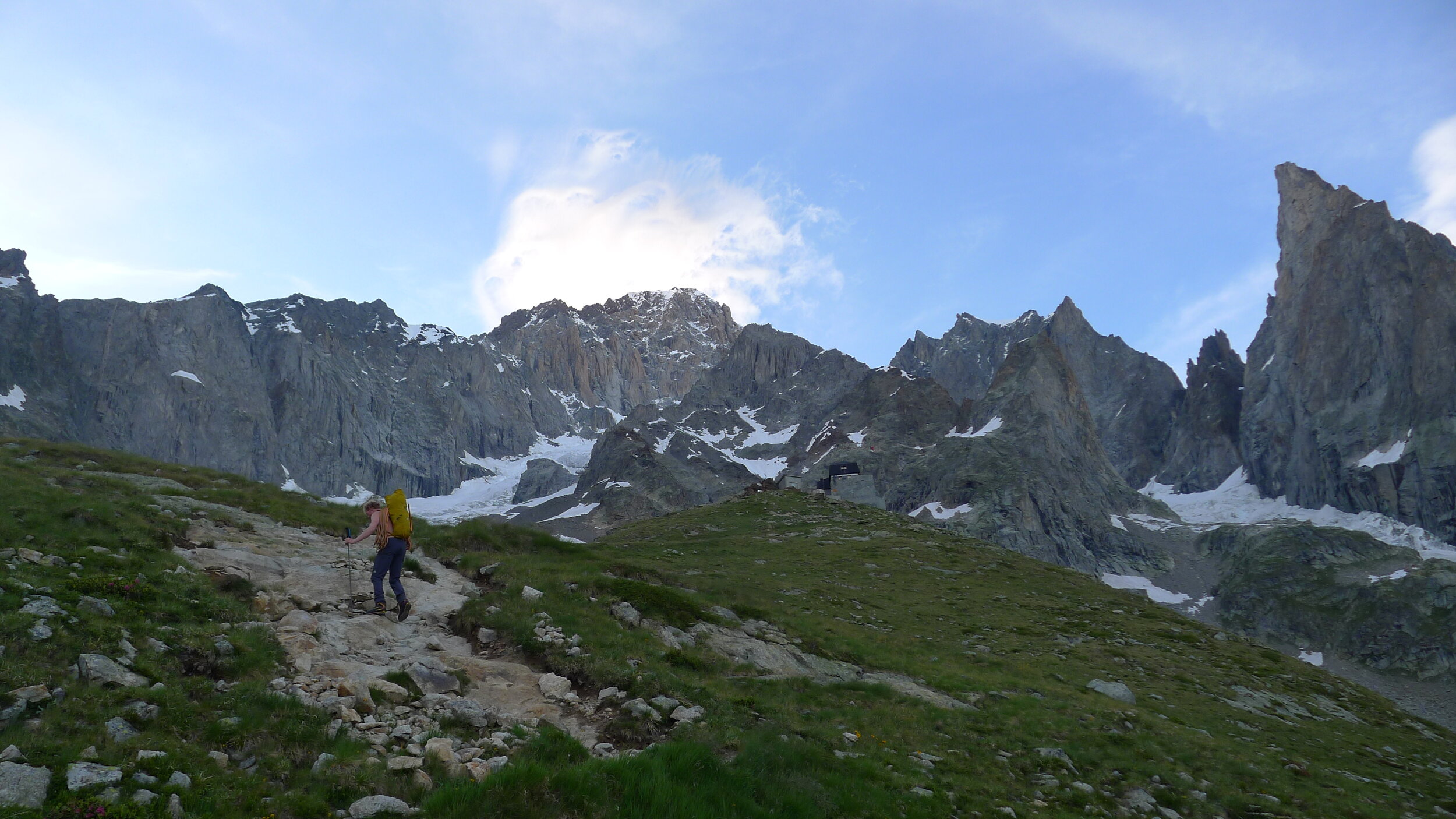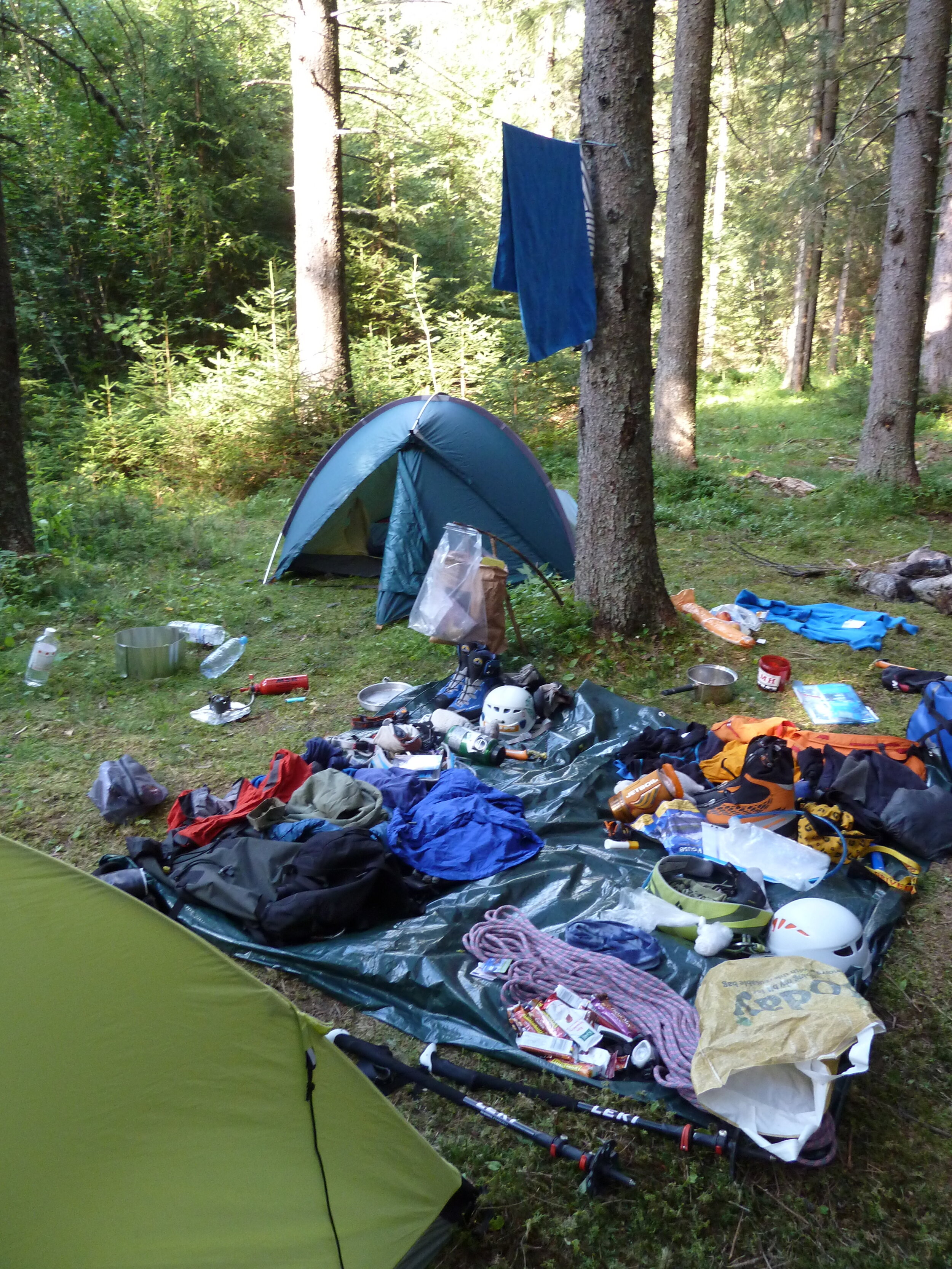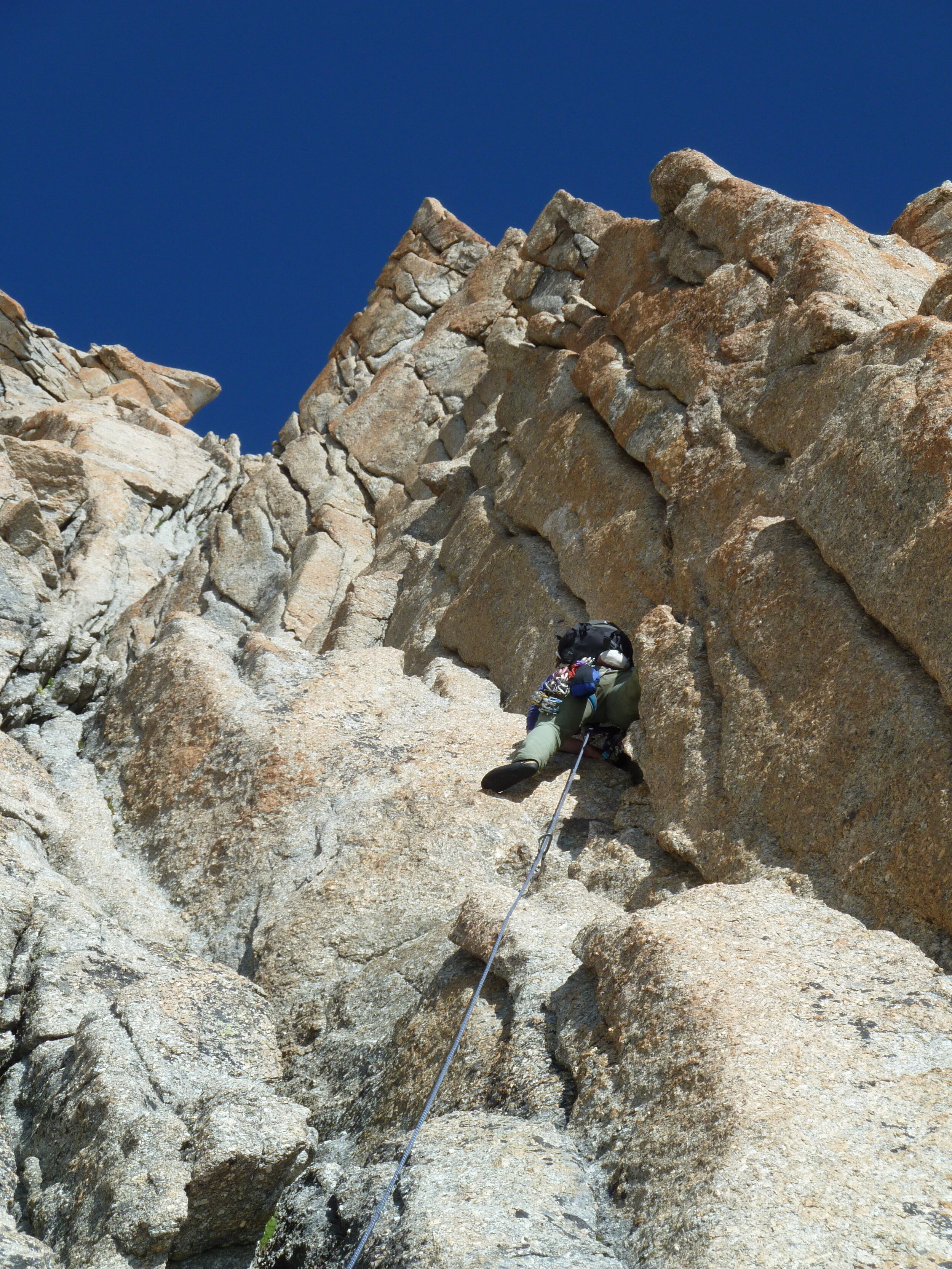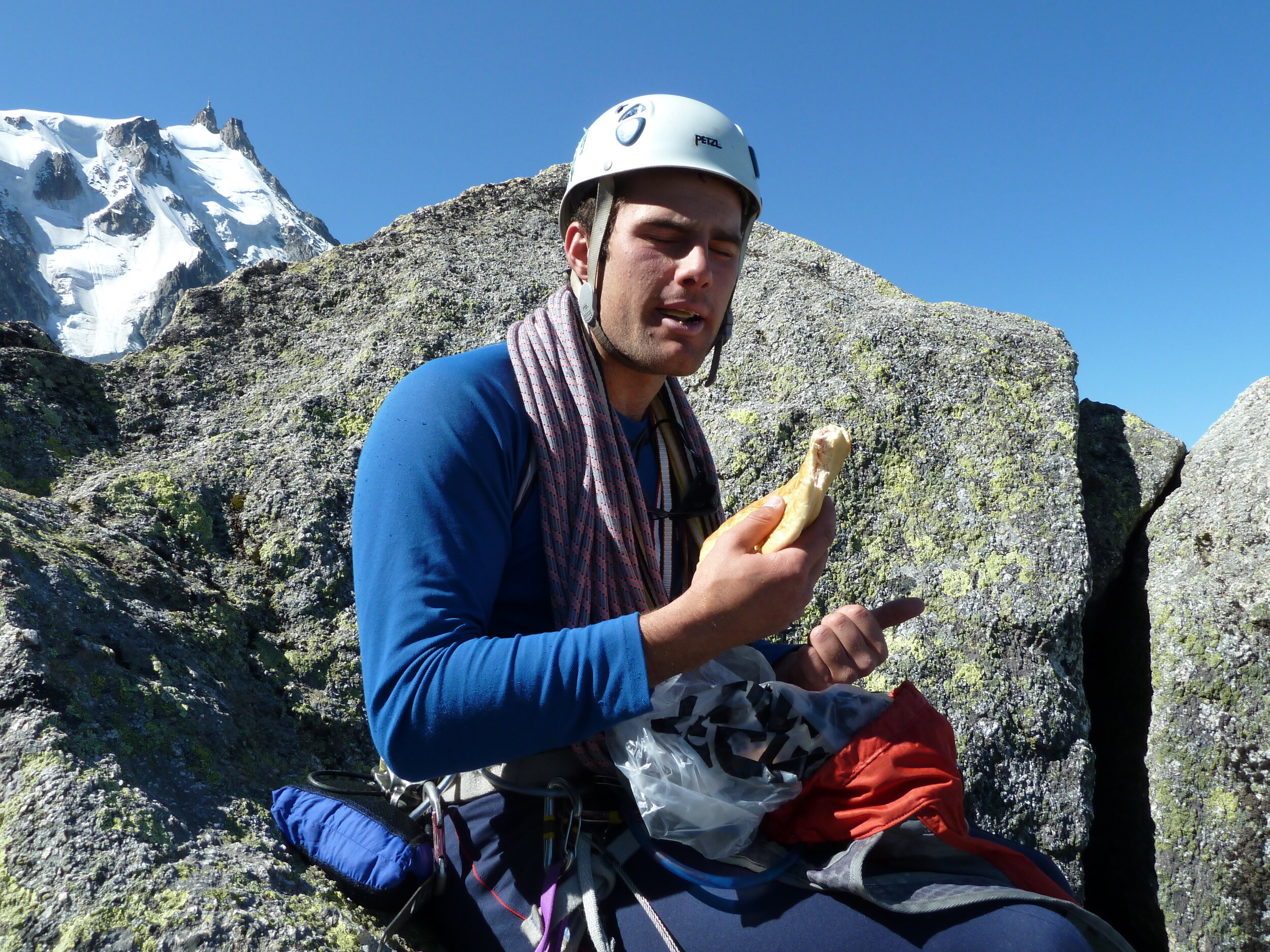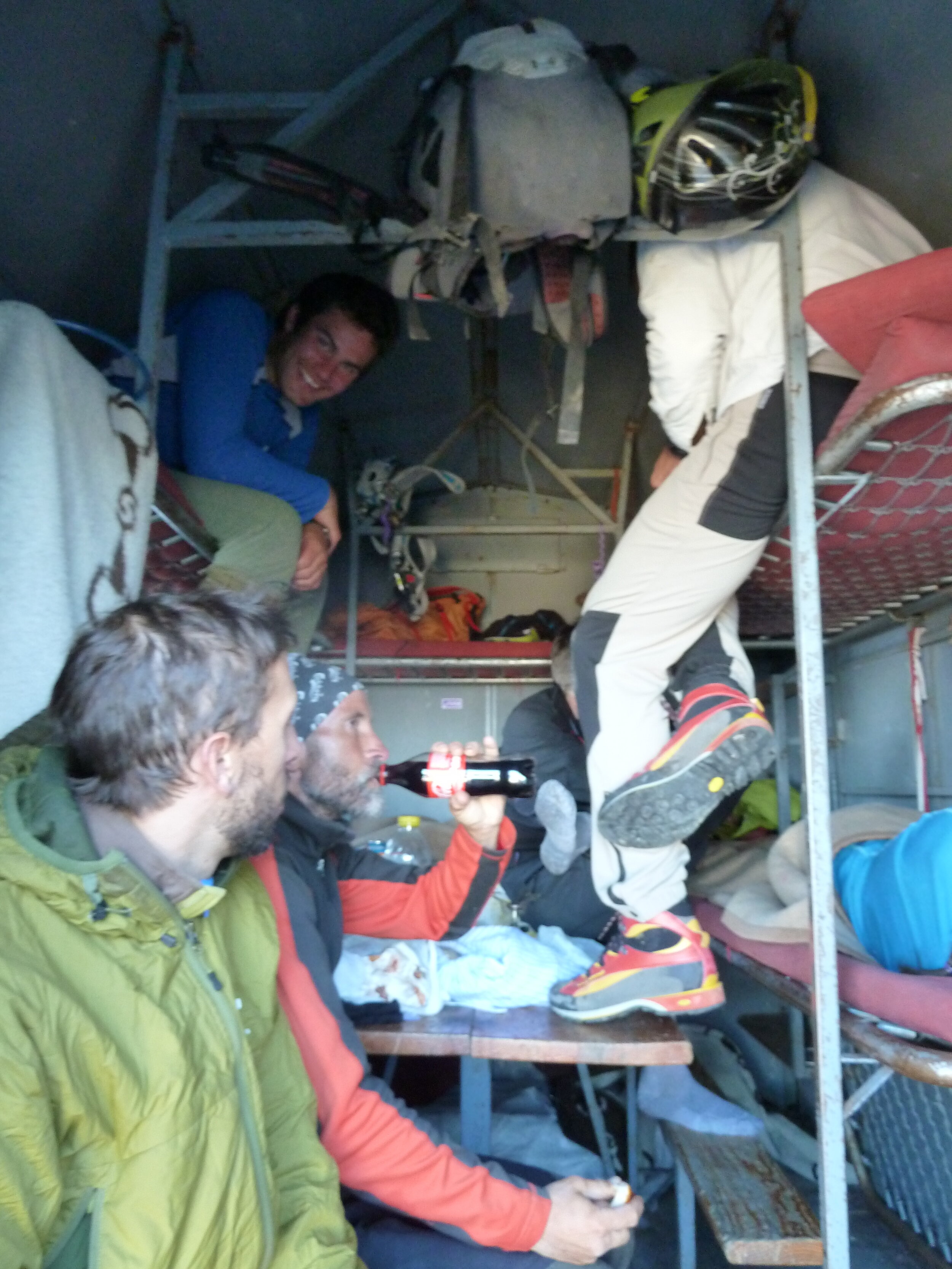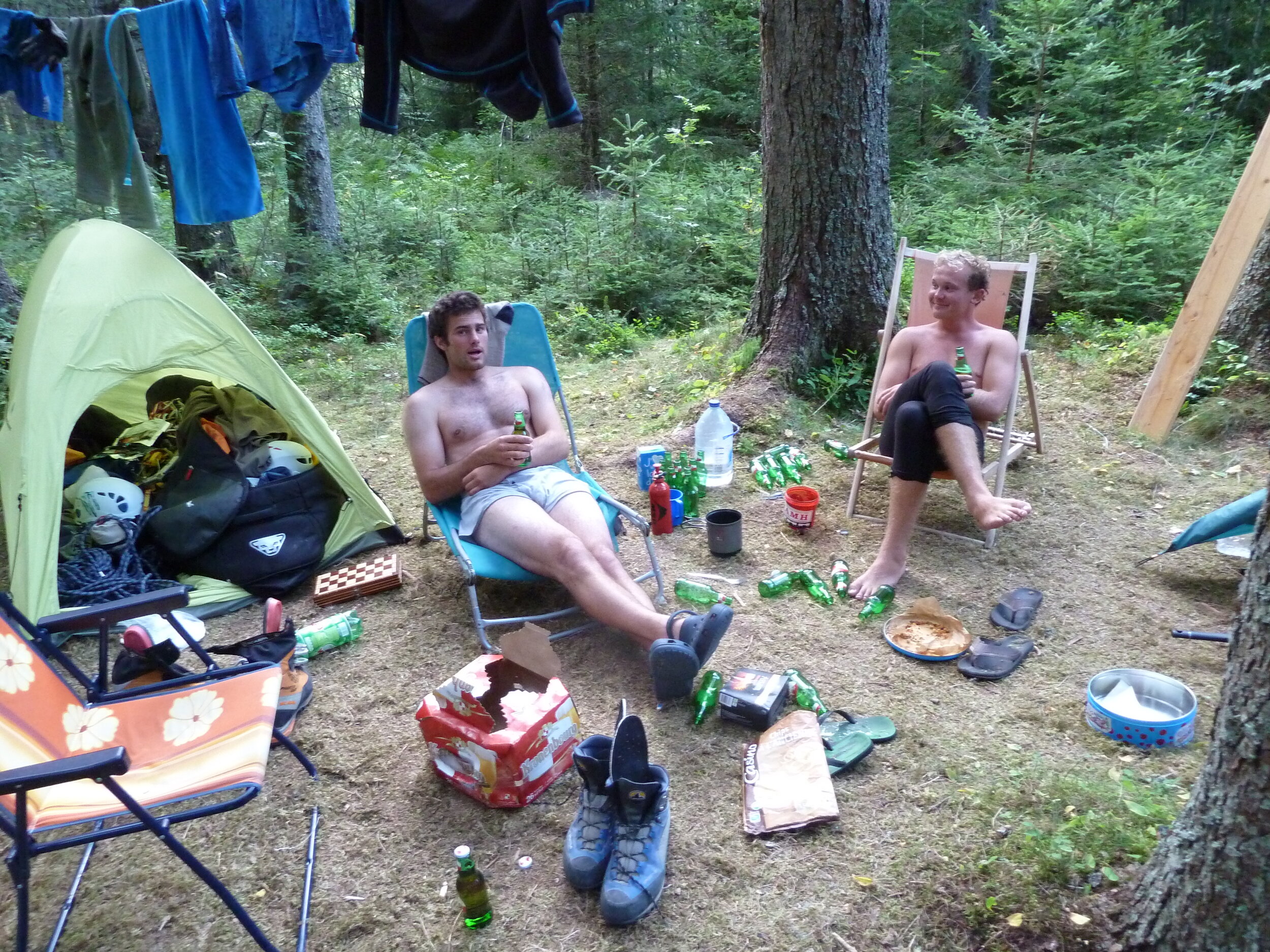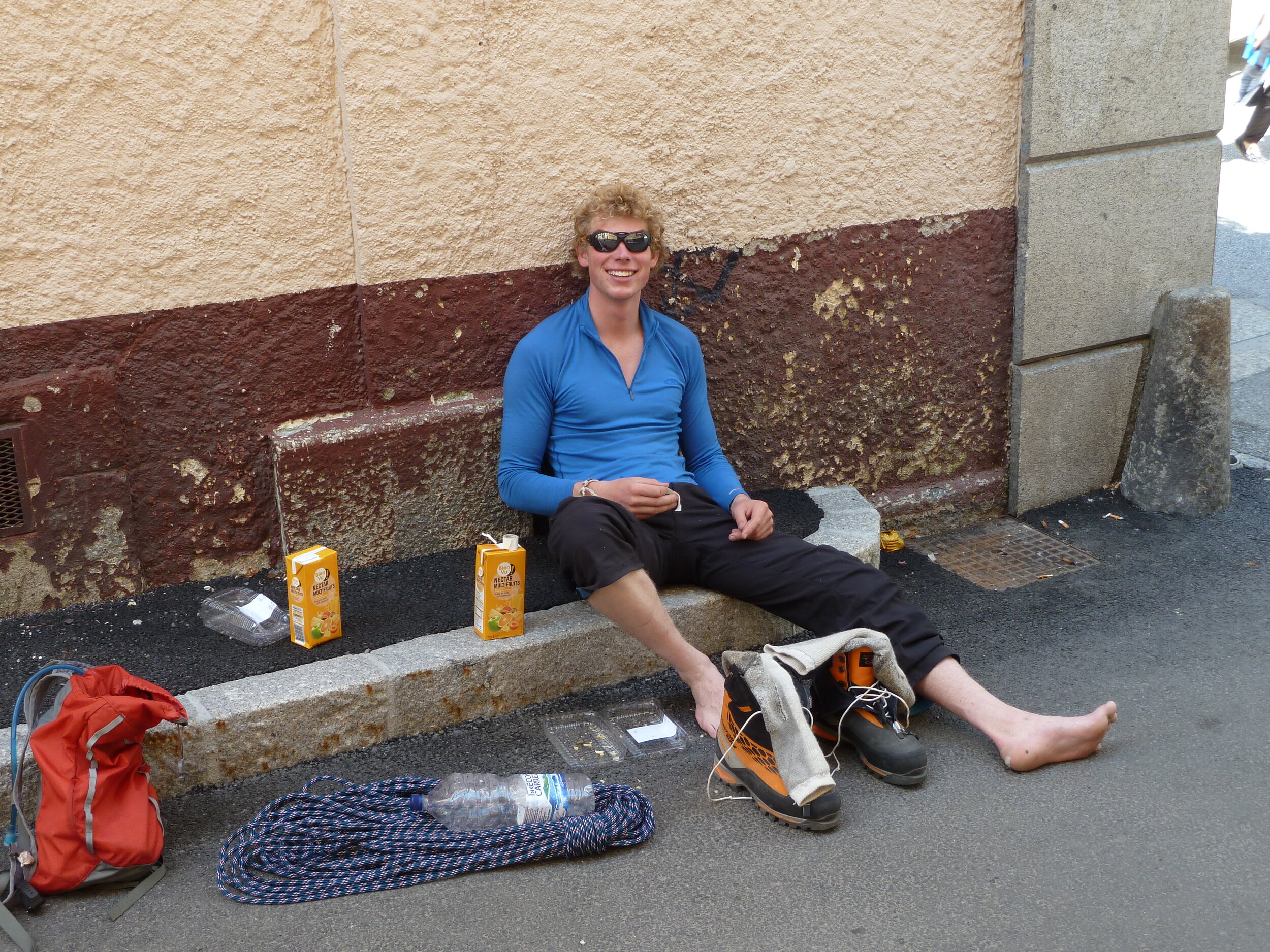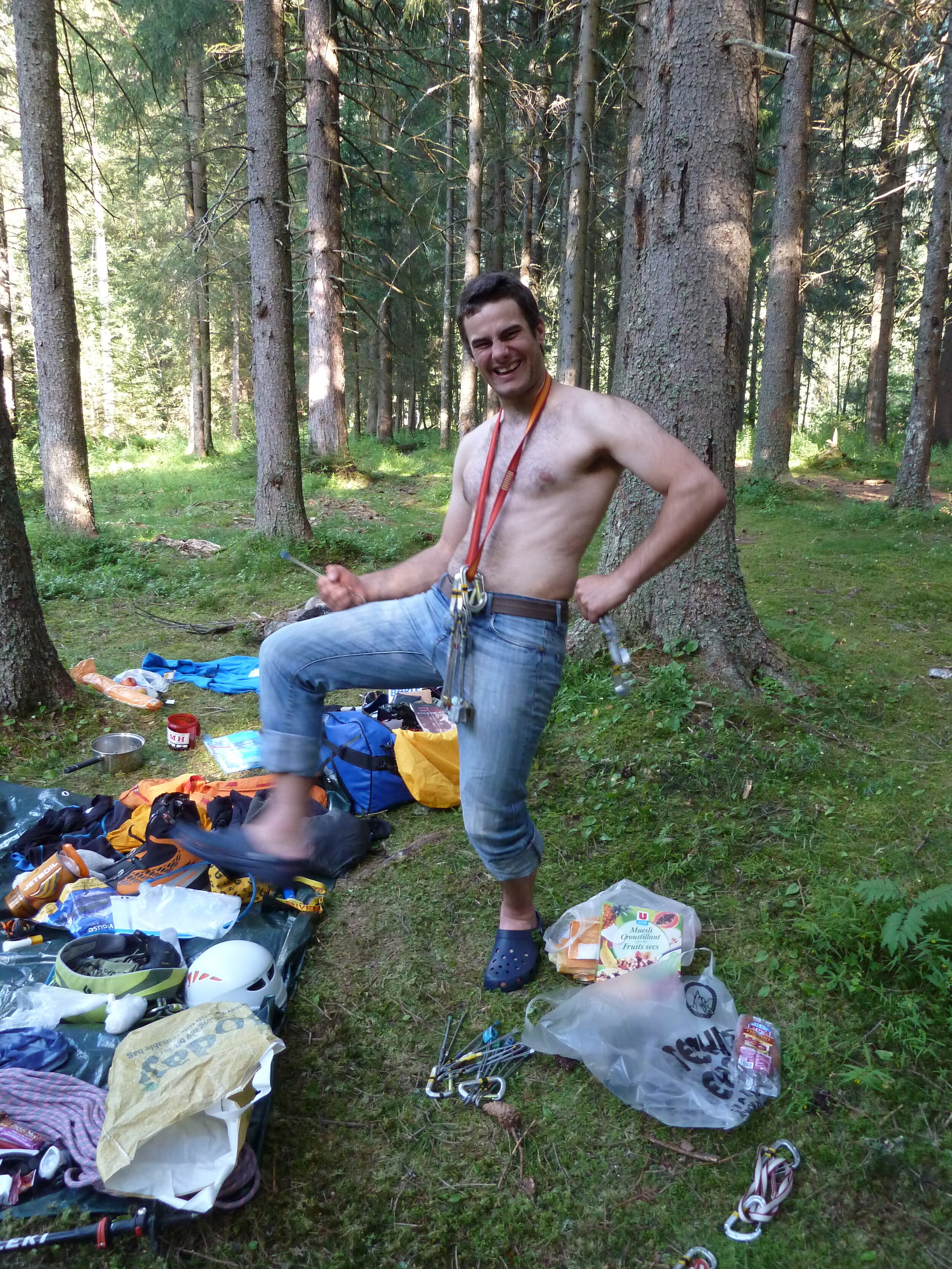Progress...?
A version of this article was first published in the 2020 edition of the RAF Mountaineering Association Journal.
I’ve wanted to be 'less shit' at climbing for a while. But how do you quantify this? Climbing is a personal activity which cannot be completed, nor can you measure the value of ‘a lifetime of happiness and ascent.’ It’s also a matter of perspective: one person’s project is another’s easy cruise. Occasionally separating myself from the simple enjoyment of climbing, I’m motivated by performance and feel the need to improve - or cruise other people’s projects.
I’d never describe myself as a ‘good’ climber - the British attitude is always to play down achievements and be the underdog. But the extent of how ‘not shit’ you are depends on the individual. Everyone wants to be better, but I suspect very few people want to be on the north face of Jannu (7710m, Nepali Himalaya).
As part of this, I want to climb big routes in good style: onsight. Free. Competently. I’m averse to epics and abseiling. Nobody wants to make stories out of drama. This means it was a pleasant experience to climb the Central Pillar of Frêney - a weighty, historic alpine route - with Tony Stone, in good style. Although we huffed and puffed, faffed with bags and only just onsighted the crux pitch, it still felt satisfying to have free-climbed a route I’d previously assumed would be too hard for me, and therefore involve some aid climbing. Is this a mark to progress…?
These impressive, 1000 metre routes in the mountains were often first climbed with large sections of aid. It's important to recognise how incredible many of these ‘grand course’ routes in the Alps were - and still are. Imagine questing up the Peuterey Intégrale in the 1930s, with 'joke protection' in the form of hemp ropes and the occasional piton. Rescue (of any form) must've been a concept rather than a possibility, just like forecasts and lightweight equipment. It would've been truly wild, stepping onto the summit of Mont Blanc akin to standing on the Moon.
Nowadays, standards, equipment and techniques have evolved. The Frêney Pillar (Mont Blanc), Divine Providence (Grand Pilier) and the American Route (Fou) were all climbed decades ago, but are now more common as free routes. Progress…? I suspect many people settle for 'just getting up the thing,' occasionally pulling on the odd fixed peg - as I think I would have done on my first attempt at the Frêney in 2012 - but in the main, we aim for the onsight. Despite some saying I’ve ‘covered the ground’ on Divine… and that I’d be silly to re-visit the route, I still want to go back and free it. When John McCune, Uisdean Hawthorn and I did it, we had to aid some pitches as they were wet.
On the top of the White Mountain after climbing DP with John McCune (left) and Uisdean Hawthorn (right)
In 2012, Ollie Burrows and I spent a summer living in the woods in the Chamonix valley. We ran amok like feral children, climbing everything we could (including the trees), binge-eating watermelon and getting drunk in the bad weather. We set up a group of tents in the woods, a washing line hanging between branches. One day our wilderness was shattered when a 30-metre pine tree randomly toppled over. ‘If a tree falls in the middle of the woods… it makes a bang!’ we joked. We climbed over the new trunk, suddenly quiet in thought, wondering about tree rot and where the next one might thunder into the floor. Our camp now felt very fragile.
Ollie and I emerged from the forests in sunny weather, eager for the mountains. Cutting our teeth on the rough granite of the Mont Blanc range, we gradually bit off bigger objectives - and occasionally the rock bit back, keeping us in our place. We aimed for the Frêney pillar as a grand finalé at the end of summer. After spending two days approaching via the Eccles bivy hut, we were gutted to realise we'd (perhaps) been sandbagged into taking only one 60m rope. We needed to rap down the Col des Eccles into the Frêney basin, but with just one rope it looked hard and dangerous to start vertical-choss-bashing. In hindsight, with the knowledge I have now, maybe we could've made it happen? But then what? Would we have onsighted those crux pitches...? I’m not so sure.
Chris Parkin and I walked up to the Eccles hut a few years later, eyes on the Frêney prize again. I was redpointing the approach - what had happened to style?! However, when we reached the bivy at nearly 4000 metres, we decided to bail as it was unseasonably hot. I occasionally forget the Mont Blanc range is a giant ice cream with rocks and ice poking out of it. As summer temperatures get warmer for longer every year, the ice cream melts quicker and more falls off… Sometimes it’s good to run away.
***
July 2020. Tony Stone and I lounged in the Eccles bivy hut, hearts thumping through our ears. The stillness and peace of the Italian side of Mont Blanc was broken only by a chough, surfing in the updrafts. Far below, our footprints stamped into the glacier like a dot-to-dot trail through the crevasses. We melted litres of water in a constant operation of drinking and pissing and breathing. As bad as I felt, I knew Tony would be feeling a lot worse - at least I’d recently slept at this altitude. I smiled grimly, looking across to the skyline of the Peuterey Integrale; this time last year I was nursing a similar headache as we climbed ‘the longest route in the Alps.’
Tony is a Scotsman through and through: he has high standards and ethics (usually!), but says few words. He’s climbed countless hard or well-known routes, but you’ll never hear of his ascents. A weapon on hard trad, with a wealth of experience from around the world, Tony and I have climbed plenty of good routes together. And I can hear Tony grumbling now - he’ll dislike even this mention.
After the two previous attempts at the Frêney with Ollie and Chris, I vowed the third time would have to count. I couldn’t face two days of walking uphill, only to bail again. I know it’s hard to make a route ‘count’ as there are so many variables out of our control, but we can certainly adopt a strong mentality: ‘we’re going up until something forces us to stop,' as the Slovenians say. And a favourable forecast, strong partner and an optimistic - yet determined - mindset put us in good stead. After years of anticipation about big routes, my mind has strengthened and I feel butterflies flutter less. Progress, perhaps?
The alarm beeped at some awful hour and Tony kicked open the door of our Eccles ‘suffer and sweat’ cabin. Cool, fresh air flooded in. We paused to gaze at the night sky, shimmers of light against a black canvas. The darkness felt subdued, with only the quiet hiss of a river in the valley far, far below. There’s a certain magic to being high in the mountains, with shadowed peaks silhouetted against a million stars. We raced towards the route, traveling over good snow. With noticeably better conditions compared to when I was here with Ollie, we moved faster.
Sunlight washed down the mountains, colouring dark stone to golden orange with an invisible paintbrush. Climbing quick pitches, I kept my mountain boots on so I could step through the snow over all the ledges - I was surprised how much it had snowed. We revelled in having the mountains all to ourselves. Tony kept on my heels so I sped us to the base of the Chandelle, the route’s most famous feature. It burns like an enormous golden candle perched on the top of the pillar.
Tying into the middle of the rope so we could haul our packs with the loose end, Tony neatly dispatched the first two pitches as a bitter shadow crept round. Anxious not to waste time, we changed over and I traversed to the right, clipping fixed pegs and tiptoeing around the arête. Within a couple of moves, I suddenly had 1000 metres of exposure and air beneath me. I ogled at the drop, fascinated and adrenalised. Looking back to my fingers, I realised they were an ‘over-gripping’ white, so I hurried to the belay.
So far, all the climbing had felt a bit soft for the grade, so I confidently launched into the final pitch - a thin crack ending with a ‘bomb bay’ chimney. I thought back to climbing on the Llyn peninsula with Henry Francis…
…Although it never rains in north Wales, we’d bailed from Craig Doris due to rain. We found some nearby quarries which stayed dry thanks to their bizarre stepped overhangs. At the base, I read the guide description for an E4 6a, noting it was first climbed by Pat Littlejohn. I looked up to see him and a partner only a few metres away; ‘wow, be cool lads,’ I said.
‘What’s a bomb bay?’ I nervously asked Pat. He looked at me, then pointed up at the massive chimney-slot, obviously hanging above our heads. ‘THAT’S a bomb bay!’
Oh shit, I thought.
***
I shoved my bloodied fingers into the narrow crack, the Chandelle’s crux pitch and infamous bomb bay leering overhead. Clipping fixed gear along the way, I wondered how many people had pulled on these pegs. Wait - is that a wooden wedge placed by Chris Bonington during the first ascent? History has a funny way of being in the present.
The crack steepened and my legs began to shake. An icy wind funnelled up the crag, and I knew it wouldn’t be long before Tony froze to the belay. I nursed a quick rest before the bomb bay slot and then - literally - got stuck in. Pressing my toes against one wall, polished from countless boots and rucksacks, I wedged my back against the other side of the slot. Knocking chunks of ice from the chimney, I wiggled leftwards towards the opening like a stuck slug, heart and lungs heaving. I desperately wanted to shout ‘take!’, to pull on the piss-taking pegs which dangled by my face, but I knew I’d regret it afterwards. I had to keep fighting.
Knees and toes now wedged against opposite walls, I palmed and scrabbled and slipped. Somehow I wriggled closer to the edge, stretching until I could creeeeeep my fingers onto a just-good-enough hold on the lip. 'Go on!’ Tony shouted at me, the wind raging at him, and I shouted back to the wind. I fought - fought to cling on, fought to breathe in the thin air, fought to make my feet stick. I threw another hand on and hauled myself onto the belay ledge, puffing with the effort. ‘Get in!’
The rest of the route passed in a long blur. Whenever you’re past the crux and just want it to be over, you’ll inevitably have to deal with ‘classic alpine bullshit’: endless pitches, ridges, scrambling, abseils, walking… and so it was with the Frêney.
Finally, Tony and I huddled into the wind on the summit of Mont Blanc, clouds scudding all around, and quickly snapped a photo.
Does style matter? I would argue, as I have in the past, that style matters. The way we do things is as important as what we do, and I’ve rarely been content to simply climb ‘by any means.’ I’m much more satisfied when I climb well, clean and free. Of course, the goal is to climb a hard, new, alpine route high in the Greater Ranges, and this marks the ideal of progress in my mind.
Have I become ‘less shit’? Have I progressed in my climbing? I certainly think so - I had a better chance of onsighting the Frêney now, compared to previous years. But then again, climbing onsight requires so much luck… so, who knows!
On the Blanc after the Frêney. Tony’s first time! Photo: Tony Stone
(Below) In 2012, I got back from climbing the Cassin Ridge (Denali) with Tom Ripley and headed to the Alps. Ollie and I spent the rest of the summer living in the woods and climbing as much as possible. We were joined by Alex Hallam. It was incredible.
